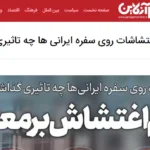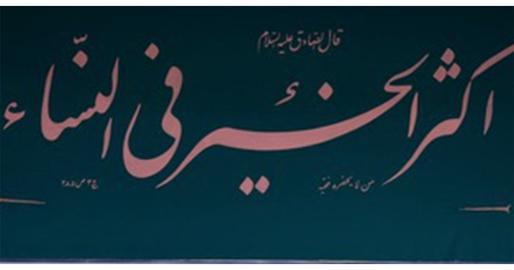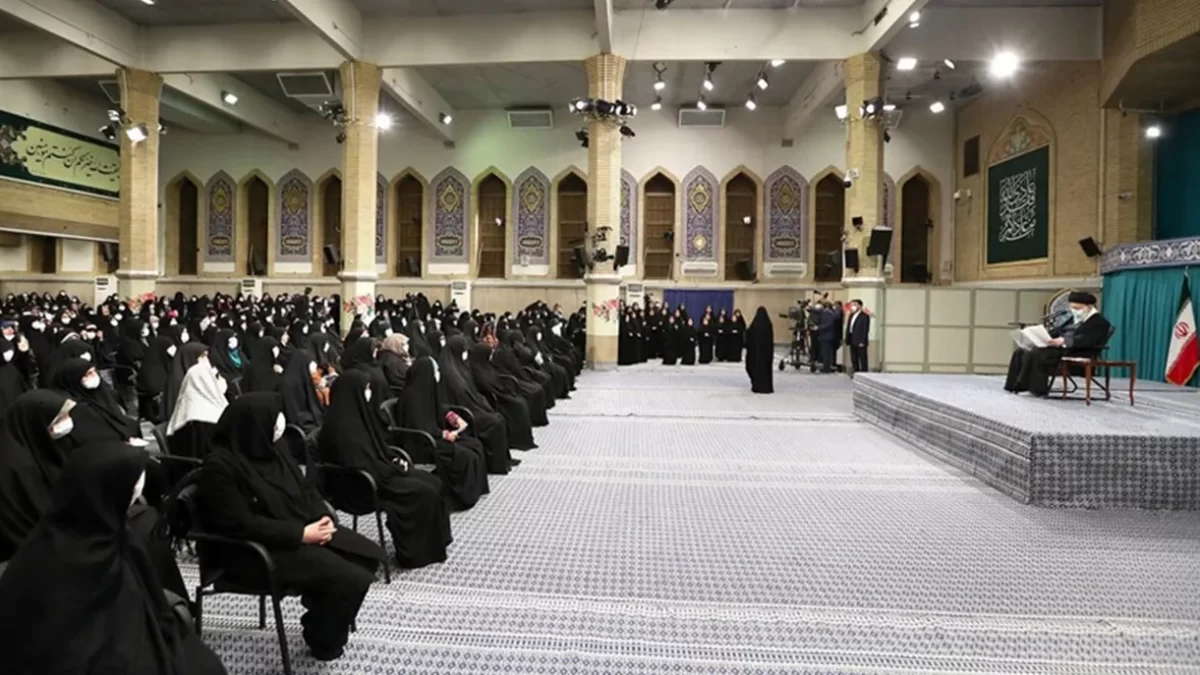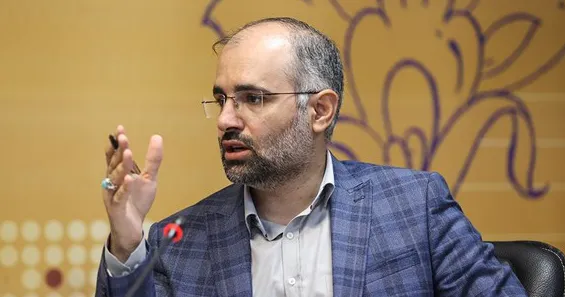
Media Review: Fars News Agency and the Conspiracy Theory of Paris Gathering
May 7, 2023
Media Review: Jamejam and Information Manipulation with Invalid Data
May 7, 2023If cinema viewers are familiar with the techniques of the art of cinema, it is more likely that they will be attracted to independent films rather than Hollywood/Bollywood films.
Similarly, if media and press audiences have the skill to distinguish facts from opinions and have media literacy, they cannot be consumers of yellow, biased, and unreliable media outlets, and their expectations of media quality will be much higher. In fact, there is a direct relationship between our expectations of the media and our level of knowledge and skills.
The audience’s expectations of a media outlet are based on its produced content and are gradually formed. It is true that from the beginning, the audience can determine whether they are dealing with a satirical, political, sports, or other types of magazines, or a cinema media outlet. However, in addition to the superficial aspects and general policies of the media, its quality also creates different levels of expectations.
Is the audience facing a high-quality and credible satirical magazine or a low-content yellow magazine? Therefore, the level of expectation from a media outlet depends on its format, appearance, and the quality of its produced content.
With this introduction, pay attention to Fars News Agency’s marginalization of the remarks of Ayatollah Ali Khamenei, the Supreme Leader of the Islamic Republic, about the position of women in the West and the Islamic Republic, in the presence of a group of women. On January 4, 2023, Fars, in an article by Mohsen Mahdian titled “The Envious Speech of the Leader/What Was the Installed Sermon Above the Leader’s Head Today,” wrote: “The installed sermon is as follows: ‘Most of the goodness is in women.'”
According to the report of this news agency, the banner in front of the speaker also stated: “Imam Khomeini: Woman is the origin of all goodness.”
Fars further wrote: “Now let’s review the Leader’s remarks among women inside these parentheses.
Firstly, unlike many others, the Supreme Leader does not speak reactively against the West; he is entirely demanding. They have taken away all the identity of women to make them obedient to capitalist materialism and arrogant ignorance. They have taken away the humanity of Western women to turn them into their slaves. On the other hand, they talked about the position of Iranian women. How far we have come. Today, our women are prominent and influential in individual and social fields. Reviewing this background is instructive for those who do not see their assets with closed eyes and are trapped in their own denigration.
Secondly, redefining the position of Iranian and Muslim women was the main focus of the speech. They have been saying for a long time that as long as a woman is a housewife, she is backward, and progress is on the streets. Then a group influenced by the West considered the elimination of hijab and covering as a social introduction. The Leader of the Revolution redefined all these titles. Firstly, housewifery is not being confined to the house, and the presence of women in the social sphere is a necessity. Secondly, they addressed the real role of women in the household to clarify the relationship between these two missions. The stability of the family is based on women. Their interpretation was as follows: like the air we breathe. From this perspective, housewifery means safeguarding the flow of family life, both physically and spiritually, and it is beyond and superior to any other mission.
Third: A precise depiction of hijab. They neither denied the necessity of hijab like the reactionary internal movement nor did they reach the point of Takfir (accusing someone of apostasy) against Iranian women. They emphasized that it is not a matter of outward weakness, denying religiosity and revolutionary spirit. With this same introduction, they entered into the story of disturbances. They highlighted that Iranian women, regardless of the level of hijab, stood against the anti-revolutionary obscenity during the disturbances. Contrary to the assumptions of detractors, it did not involve the discovery of hijab, but rather a firm insistence on modesty and chastity. It would be great if we realize the significance of this issue. Today, hijab goes beyond personal sanctity; it is a struggle. Each step of a person like this on the streets is an act of worship… ”
It is necessary to mention a few points regarding this controversy and the expectations from the Fars News Agency:
1. There is a difference between independent and credible media and propaganda.
Independent media engages in criticism, questioning, and accurate information dissemination, whereas propaganda serves the government’s agenda to promote and propagate the ruling ideology. The controversy surrounding the independent media’s commentary was fundamentally based on critiquing the leader’s views on women’s freedom in the West, challenging the destructive cliché of equating freedom with licentiousness in the West, and questioning the presented image of women’s status in the Islamic Republic as well as the widespread violation of women’s rights in this regime. On the other hand, the Fars News Agency and its writer, as part of the government’s propaganda apparatus, consider it their duty to promote the closed-minded thinking of the Supreme Leader and present his opinion as the reality of women in the Western world.
2. There is a difference between facts and opinions.
In democratic societies where freedom of expression and the media are recognized, media outlets have embraced fact-checking and verifying the accuracy of statements and claims. They strive to assess the validity or invalidity of a statement through reliable facts and data, ensuring transparency for the audience and preventing them from being misled. However, the mission of the propaganda apparatus is to feed opinions to the audience instead of facts. In fact, the propaganda apparatus aims to mislead the audience and control public opinion by manipulating information without any critical inquiry or raising doubts about the presented statements. They consider any opinion of the ruling apparatus as a valid fact and present it to the audience to deceive them.
3. There is a difference between an audience capable of evaluating content quality and a biased audience.
An audience capable of discerning content quality, when confronted with credible and reliable content, sees it as an opportunity to engage in dialogue with others, exchange ideas, and cultivate culture. However, for a biased audience, there is little room for dialogue since they are not inclined towards critical thinking and accept content with closed eyes and ears. Therefore, the Fars News Agency’s controversy over the biased and baseless statements of the leader about women in the West was not intended for a thoughtful audience but rather aimed at simplifying information for the biased audience of this news agency.
In general, the audience’s expectations of Fars News Agency are nothing more than the promotion and dissemination of the closed-eye ideology of the ruling establishment, and no one expects them to challenge baseless and undocumented statements made by the leader of the Islamic Republic. It is sufficient to know that these media outlets assume the audience lacks critical thinking, is incapable of distinguishing facts from opinions, and is ill-informed. They strive to preserve the loyal and biased minority through propaganda tactics, including the simplification of information. Therefore, these media outlets, including Fars News Agency, fall into the category of harmful media, and it is essential for us to protect ourselves and others by approaching them critically.
حاشیهنویسی خبرگزاری فارس بر اظهارات بدون فکت رهبری
تماشاگران سینما اگر با تکنیکهای هنر سینما آشنا باشند، احتمال این که مجذوب سینمای مستقل «Independent movie» شوند، بیشتر از آن است که جذب سینمای هالیوود/بالیوود شوند.
به همین طریق، اگر مخاطبان رسانهها و مطبوعات مهارت تشخیص فکت از نظر و تحلیل و سواد رسانهای داشته باشند، قاعدتا نمیتوانند مخاطب رسانههای زرد، وابسته و بیاعتبار باشند و سطح انتظار آنها از کیفیت رسانه بسیار بالاتر میرود. در واقع، بین انتظار ما از رسانه و سطح دانش و مهارت ما، رابطهای مستقیم وجود دارد.
انتظار مخاطب از یک رسانه، براساس محتوای تولیدی آن و به مرور ساخته میشود. درست است که از ابتدا مخاطب میتواند تشخیص دهد که با یک مجله فکاهی، سیاسی، ورزشی و … روبهرو است یا یک رسانه سینمایی، ولی علاوه بر وجوه ظاهری و خط مشی کلی رسانه، کیفیت آن نیز سطح متفاوتی از انتظار را ایجاد میکند.
آیا مخاطب با یک مجله فکاهی با کیفیت و معتبر روبهرو است یا یک مجله فکاهی زرد و کم محتوا؟ پس سطح انتظار از یک رسانه، هم به شکل و فرمت و ظاهر آن و هم به کیفیت محتوای تولیدی باز میگردد.
با این مقدمه، به این حاشیهنویسی خبرگزاری «فارس» بر سخنان آیتالله «علی خامنهای»، رهبر جمهوری اسلامی در جمع عدهای از زنان پیرامون جایگاه زن در غرب و جمهوری اسلامی دقت کنید. فارس روز ۱۴ دی ۱۴۰۱ در یادداشتی به قلم «محسن مهدیان» با عنوان «سخنرانی غبطهبرانگیز رهبری/ حدیث نصب شده در بالا سر رهبر انقلاب امروز چه بود»، نوشت: «حدیث بالا سر این است: اکثر الخیر فیالنسا (بیشتر خوبیها از زنان است).»
به نوشته این خبرگزاری، روی بنر مقابل سخنران نیز چنین آمده بود: «امام خمینی: زن مبدأ همه خیرات است.»
فارس در ادامه نوشت: «حالا سخنان رهبر انقلاب را از داخل این پرانتز در جمع بانوان مرور کنیم.

اول؛ رهبرانقلاب برخلاف بسیاری، از سر انفعال مقابل غرب سخن نمیگویند؛ کاملا مطالبهگرایانه. این که چهطور تمام هویت زن را گرفتند تا خرج مانایی سرمایهداری و استکبار جاهلیت مدرن کنند. از زن غربی انسانیت را گرفتند تا اجیرشان شود. در آنسو از جایگاه زن ایرانی گفتند. این که از کجا به کجا رسیدیم. امروز زنان ما در چه عرصههای فردی و اجتماعی نامآورند و تاثیرگذار. مرور این سابقه برای آنها که چشم بسته داراییهایشان را نمیبینند و گرفتار خود تحقیریاند، آموزنده است.
دوم؛ بازتعریف جایگاه زن ایرانی و مسلمان. عمده سخنرانی به همین گذشت. عمری در گوش ما گفتند که تا وقتی زن خانهدار است، عقب مانده و پیشرفت در خیابان است. بعد هم جماعتی غربزده حذف پوشش و حجاب را مقدمه اجتماعی شدن دانستند. رهبری انقلاب همه عناوین این گزاره را مجدد تعریف کردند. اول این که خانهداری، خانهنشینی نیست و حضور زن در عرصه اجتماعی، یک ضرورت است. دوم به نقش واقعی زن در خانه پرداختند تا نسبت این دو ماموریت روشن شود. این که قوام خانواده بر محور زن است. تعبیرشان چنین بود؛ مثل هوایی که تنفس میکنیم. از این جهت خانهداری، یعنی صیانت از جریان زندگی خانواده؛ چه جسم اعضا و چه روحشان و روشن است که این مهم، فراتر و برتر از هر ماموریتی است.
سوم؛ تصویر دقیق از حجاب. این که نه مثل جریان منفعل داخلی منکر ضرورت حجاب شدند و نه مثل جریان مرتجع به تکفیر زن ایرانی رسیدند. این که ضعف ظاهری، نفی دینداری و انقلابیگری نیست. با همین مقدمه نیز وارد ماجرای اغتشاشات شدند. اینکه زن ایرانی با هر سطح حجابی در ایام اغتشاشات مقابل اباحهگری ضد انقلاب ایستاد. برخلاف تصور خناسان، کشف حجاب نداشت و بر حیا و عفاف خود پافشاری کرد. کاش متوجه شویم این ماجرا چهقدر اهمیت دارد. حجاب امروز فراتر از مصونیت فردی و بلکه مبارزه است. هر قدم چنین فردی در خیابان عبادت است….»
ذکر چند نکته پیرامون این حاشیهنویسی و سطح انتظار از خبرگزاری فارس ضروری است:
۱- تفاوت است میان رسانه مستقل و معتبر با پروپاگاندا
کار رسانه مستقل، نقد، پرسشگری و اطلاعرسانی درست و دقیق است اما پروپاگاندا ابزاری است در خدمت حکومت برای تبلیغ و ترویج ایدئولوژی حاکم. حاشیهنویسی رسانه مستقل بر اظهارات رهبری، قاعدتا بر نقد دیدگاه او پیرامون آزادی زن در غرب، نقد کلیشه مخرب مساوی دانستن آزادی و ولنگاری در غرب و به چالش کشیدن تصویر ارایه شده از جایگاه زن در جمهوری اسلامی و نیز نقض گسترده حقوق زن در این نظام استوار میبود، حال آن که خبرگزاری فارس و نویسنده آن به عنوان بخشی از دستگاه پروپاگاندای حکومت، وظیفه خود را ترویج چشم و گوش بسته اندیشه رهبر جمهوری اسلامی و جا انداختن نظر او به عنوان واقعیت زن در دنیای غرب میداند.
۲- تفاوت است میان فکت و نظر
در جوامع دموکراتیک که آزادی بیان و رسانه به رسمیت شناخته شده است، رسانهها به سمت فکت چکینگ و درستیسنجی اظهارات و ادعاها سوق پیدا کردهاند. آنها میکوشند ادعاهای مطرح شده را با فکتها و دادههای معتبر سنجیده و درستی یا نادرستی یک سخن را برای مخاطب روشن سازند تا گمراه نشوند. ولی کار دستگاه پروپاگاندا، خوراندن نظرها به جای فکت به مخاطب است و اتفاقا ماموریت دستگاه پروپاگاندا، گمراه کردن مخاطب و در کنترل گرفتن افکار عمومی از طریق دستکاری اطلاعات است. آنها بدون هرگونه پرسشگری و ایجاد شک در اظهارات مطرح شده، هر نظر دستگاه حاکم را فکت معتبر تلقی کرده و آن را به مخاطب عرضه میکنند تا مخاطب را فریب دهند.
۳- تفاوت است میان مخاطبی که قادر به ارزیابی کیفیت محتوا است و مخاطب متعصب
مخاطبی که قادر است کیفیت محتوا را تشخیص دهد، وقتی با محتوای با کیفیت و قابل استناد مواجه شود، آن را به فرصتی برای گشودن باب گفتوگو با دیگران و تبادل نظر و فرهنگ تبدیل میکند. ولی برای مخاطب متعصب، گفتوگو چندان محلی از اعراب ندارد، چون اساسا مخاطب متعصب، اهل اندیشه نیست و چشم و گوش بسته محتوا را میپذیرد. از این رو، حاشیهنویسی خبرگزاری فارس بر سخنان جانبدارانه و بیپایه رهبری از زن در غرب، نه برای مخاطب اهل فکر بلکه با هدف سادهسازی اطلاعات برای مخاطب متعصب این خبرگزاری انجام شده است.
اساسا سطح انتظار مخاطب از خبرگزاری فارس، چیزی بیش از تبلیغ و ترویج چشم بسته ایدئولوژی حاکم نیست و کسی انتظار به چالش کشیدن اظهارات بدون فکت و غیر مستند رهبر جمهوری اسلامی از خبرگزاری فارس ندارد. فقط کافی است بدانیم این رسانهها مخاطب را جماعتی فاقد تفکر انتقادی، مستاصل در تشخیص فکت از نظر و کم سواد فرض کرده و میکوشند اقلیت همراه و متعصب را با تاکتیکهای پروپاگاندا، از جمله تاکتیک ساده سازی اطلاعات حفظ کند. از این رو، این رسانه و رسانههای مشابه، در ردیف رسانههای مضر قرار میگیرند و ضروری است تا با نگاه انتقادی به آنها از خود و دیگران محافظت کنیم.




